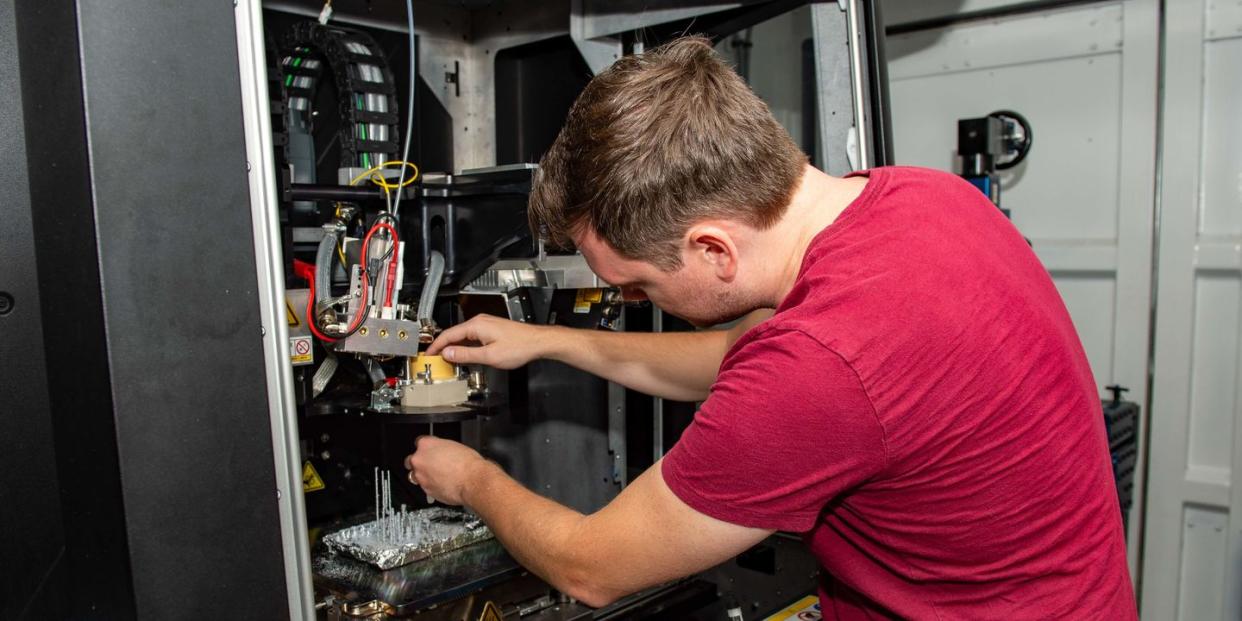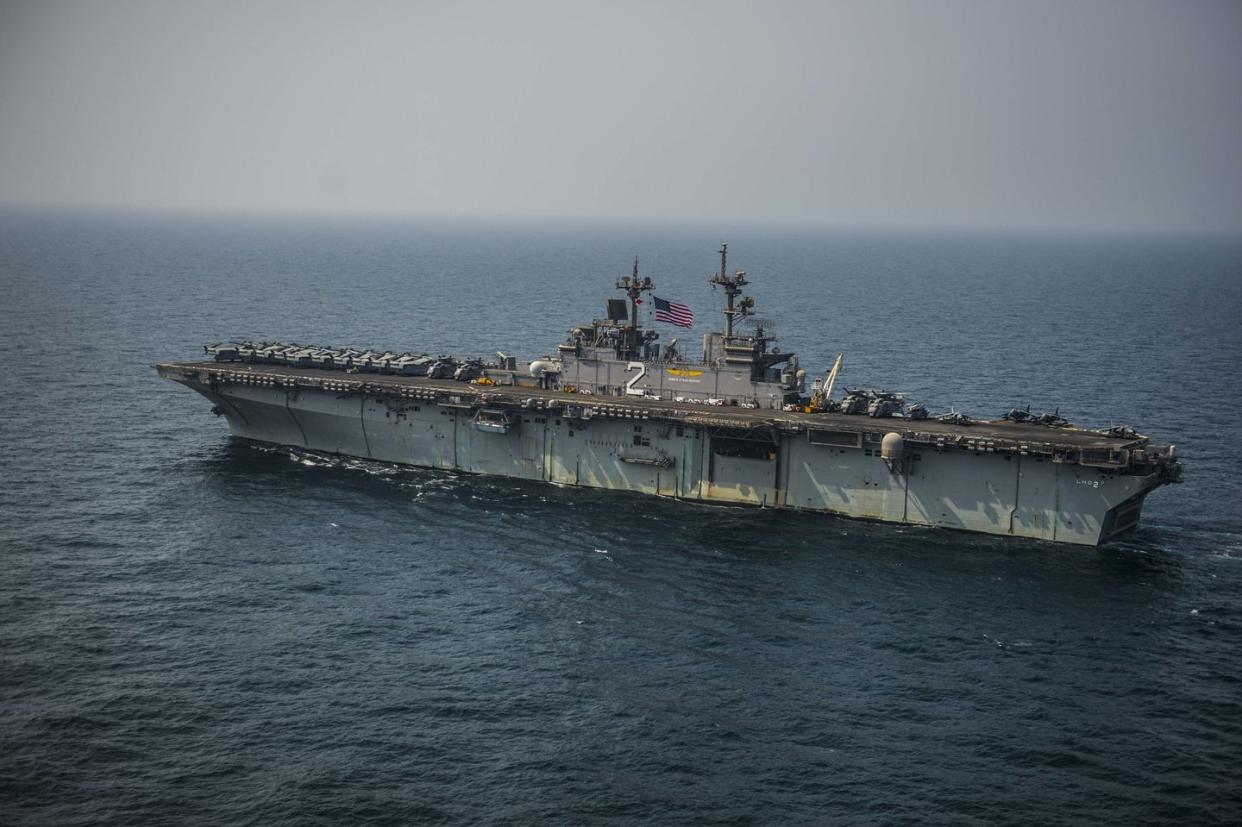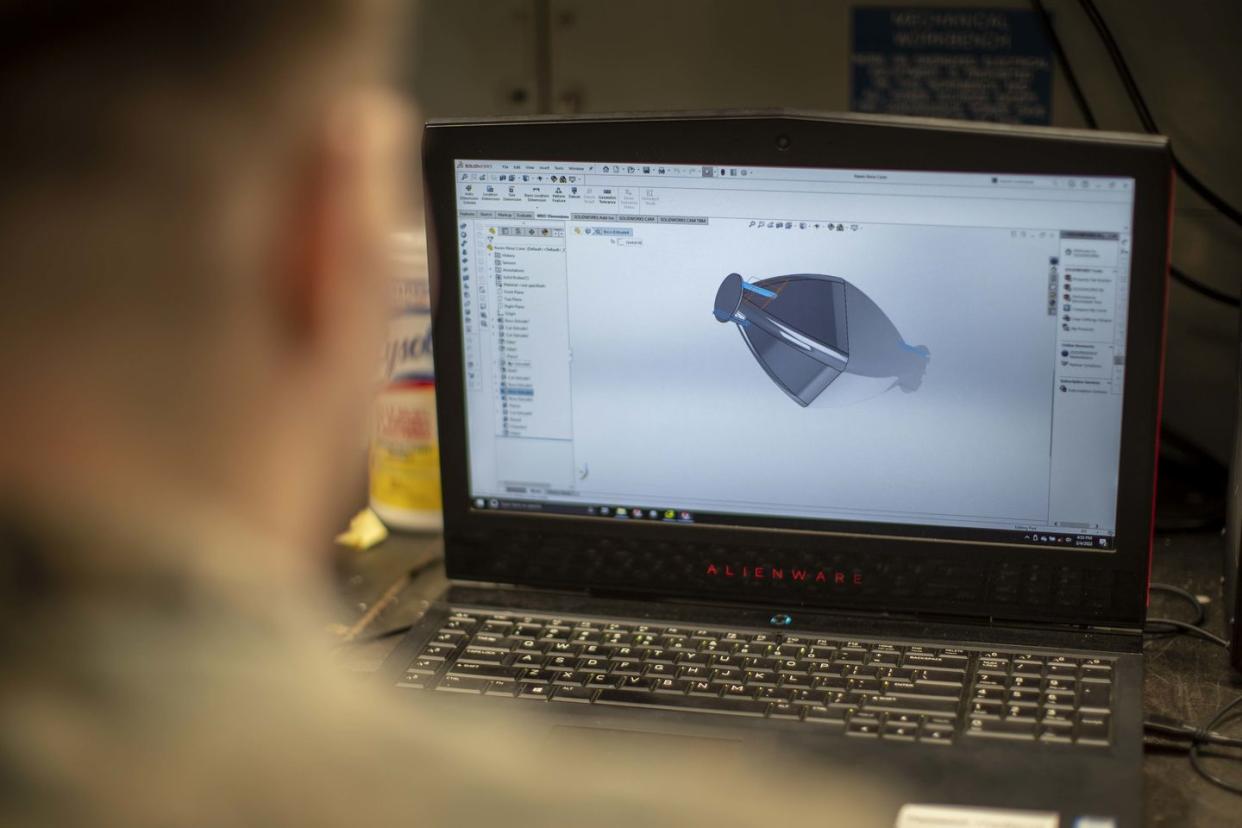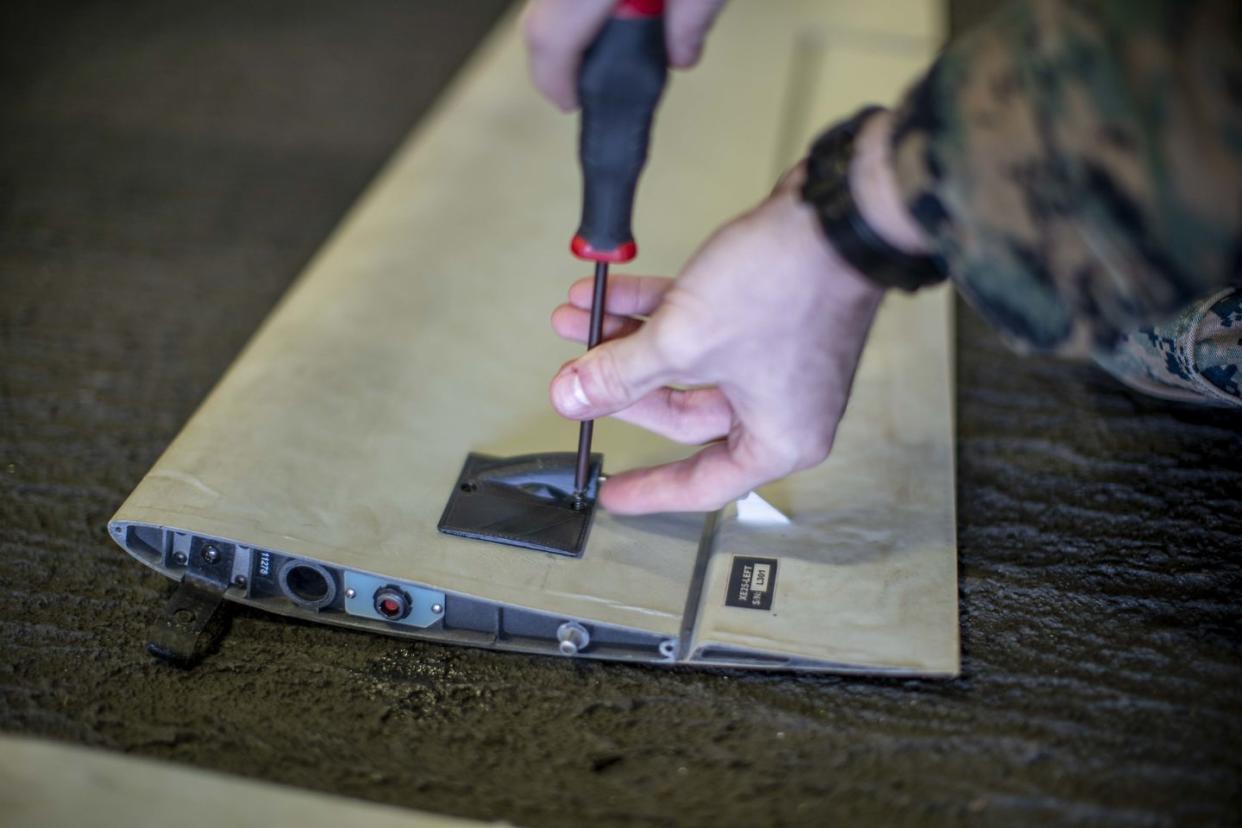The Navy is Using 3D Printers to Turn Warships Into Weapons Factories

The Navy recently equipped the amphibious assault ship USS Essex with a high-speed 3D printer.
Both the Navy and the Marines are using it to print replacement parts for drones.
3D printing is seen as a way to reduce the inventory of spare parts on a warship, while still retaining easy access to them.
One of the U.S. Navy’s largest warships is now rocking a 3D printer, allowing the crew to quickly crank out replacement parts for drones. The service hopes that additive manufacturing technology will allow it to save time and money, reducing the need to stock spare parts on hand, especially when a ship is at sea. It believes that 3D printers could someday become standard issue on every warship.

The amphibious assault ship USS Essex is one of the largest warships in the fleet. Designed to carry Marines into battle, the ship is 831 feet long and displaces a whopping 40,000 tons fully loaded. That’s a lot of ship, not to mention the crewed and uncrewed aircraft, landing craft, and the Marines equipment aboard. To keep Essex and its embarked Marines in top shape, the ship is typically stocked with plenty of spare parts to support both the ship and a force of up to 5,000 Marines for up to 30 days.
Keeping a lot of spare parts for … pretty much everything is expensive and takes up a lot of storage space, something warships do not have a lot of. Stocking spare parts is a guessing game and if the services guess wrong on a six-month patrol at sea, the mission can suffer for it. If a ship runs out of spare parts, it could be forced to have them flown out to the ship, make do, or just lose the capability altogether until the next port visit.

That goes a long way toward explaining the U.S. Navy’s interest in 3D printing. The service has experimented with so-called additive manufacturing since 2014, when it installed an ABS-based printer on Essex. The Navy used the printer to download print files via satellite, and then print the arms for a small quadcopter drone.
✅ Drone Central
Every. Single. Drone. Fighting In Russia’s War Against Ukraine
Self-Destructing ‘Kamikaze Drones’ Are Hunting Down Targets in Ukraine
How an Underdog Drone Became a Folk Hero in Ukraine’s Guerrilla Air Force
Now in 2022, Essex has received a newer, faster printer capable of greater detail that can print metal parts out of materials like aluminum; that means it can create things like “heat sinks, housings, fuel adapters, bleed air valves, valve covers, and more,” per a Navy press release. Warships typically have their own machine shops to produce parts, but “have never been able to make something with the precision and intricacy that this new 3D printer will provide,” Aviation Electronics Technician 2nd Class Jonah Waage says in the release.

A video from February 2022 shows a Lulzbot TAZ Workhorse printer in action aboard Essex. The printer is used to manufacture aerilon supports for a Stalker XE drone. The printing took place during Exercise Noble Fusion, a joint air-land-sea exercise with Japan in the Philippine Sea.
As 3D printing advances and the Department of Defense becomes more comfortable with the technology, its military uses will only grow. Today, the Pentagon is printing relatively minor items, but as printers advance, they will eventually be entrusted with complex, mission-critical parts. This is particularly important for parts used in older equipment, especially aircraft, that the manufacturer no longer produces. If a maintenance unit has the correct specifications, it can simply fire up a 3D printer and print whatever it needs, reducing wait time from weeks or months to just hours. The process is also significantly cheaper.
The military sees additive manufacturing as a vital tool for supporting forward-deployed forces. Imagine one day a ship carrying snap-in engines, avionics, and payload packages for simple surveillance drones, then printing the wings and fuselages on demand. Instead of embarking several large drones on a ship like USS Essex, the Navy and Marines could print and assemble them on demand. Thanks to 3D printing, in the near future, every U.S. Navy warship could become a giant spare parts warehouse, weapons factory, or aircraft assembly plant.
You Might Also Like
